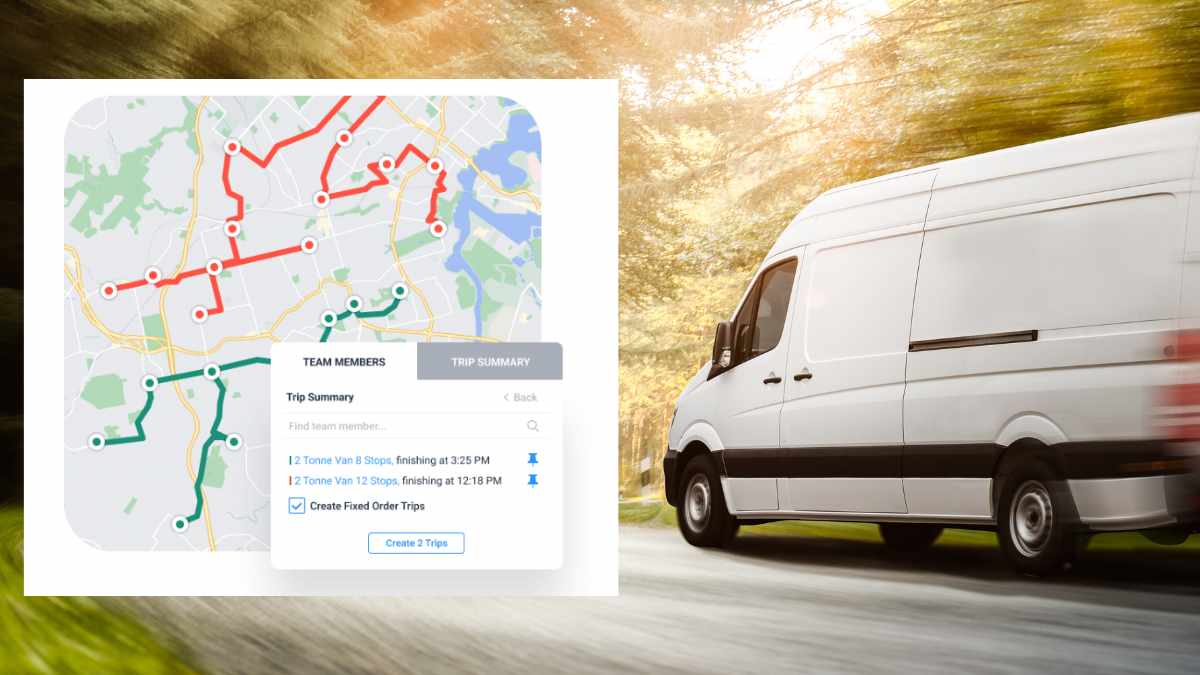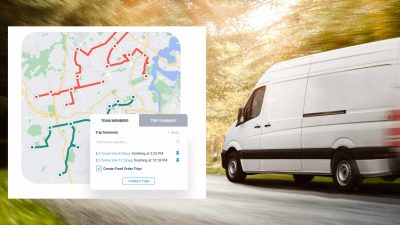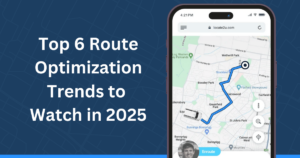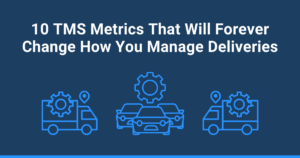
Delivery management software (DMS) is becoming a lifeline for logistics companies facing today’s biggest challenges.
The shortage of truck drivers is projected to double by 2028. One major concern is the age gap in driver demographics. This emphasizes the need for strategies to maximize existing driver productivity.
Delivery management software can improve a driver’s productivity and overall operational efficiency of the fleet.
By implementing specific strategies with DMS, businesses can deliver on time, improve customer satisfaction, and reduce the cost of delivery operations.
Here are 12 actionable tips to maximize your driver productivity with DMS.
Tip 1: Use route optimization for speedy deliveries
Almost half (49%) of consumers say speedy delivery services make them more likely to shop online again. This could be seen as a high priority for an entire delivery business if they want to stay competitive.
It’s frustrating to a driver if he misses the delivery window, arrives late for deliveries, and there’s no customer at home to receive the parcel.
Route optimization is the first tip to enhance driver productivity.
According to Routific, businesses using route optimization have reported a 20-30% improvement in route planning efficiency, enabling drivers to complete more deliveries within the same timeframe.
Route optimization is the most powerful feature of delivery management software. It helps dispatchers and route planning staff to choose the most efficient delivery paths based on real time traffic and weather conditions.
It also helps to spend less time on the road, which means less fuel consumption. Route planning with route optimization shortens the delivery time, ensuring high customer satisfaction.
WATCH: Route optimization for frozen deliveries
Tip 2: Real-time tracking creates visibility for delivery managers
You want to know where your drivers and fleet are. But keeping track of them as they are all scattered over the map is nearly impossible without technology.
Delivery management software not only increases the productivity of managers but also drivers.
Real time tracking enhances driver productivity by:
- Tracking features allow drivers to stay accountable (someone is always watching).
- Managers can easily spot if a driver is heading the wrong way and can easily inform drivers. This can avoid long delays.
- Customers are provided with tracking links so they can monitor their delivery’s progress independently. This reduces the volume of “Where’s my delivery?” calls.
- Real-time tracking improves the accuracy of the estimated time of arrival (ETA).

Tip 3: DMS speeds up driver communication
Imagine delivery drivers having to communicate by phone when they have to reroute or handle constant calls to dispatchers or managers to update their ETAs and delivery progress.
It all takes time and disrupts their focus.
The delivery management platform helps drivers to communicate accurately with managers without wasting time.
It also minimizes delays like rerouting or sudden changes in the delivery. No need to spend long periods on the phone.
Tip 4: Delivery management automates dispatching
There’s no need for a person to sit in front of a computer and manually assign deliveries to drivers. This saves time for managers and delivery drivers, with fewer errors slipping in.
When drivers are assigned accurately, they are more productive, they know what they have to do, and they get the work done.
It streamlines scheduling so drivers receive clear and accurate instructions for their routes.

Tip 5: DMS gives analytics that help improve performance
You won’t know what you are doing wrong unless someone points it out. This is exactly what delivery management software does.
With a comprehensive report and analytics of each driver’s performance, managers can see where drivers may need to improve.
Regularly viewing the analytics can reveal important areas where a delivery driver can improve and be more productive.
Tip 6: Predictive maintenance alerts help keep drivers safe
No one can work knowing that your life might be at risk. Delivery management software helps managers to know exactly when a vehicle has to go for maintenance.
It can also send alerts when it spots irregularities, such as overuse of the clutch or hard braking.
Having this information available helps managers keep the fleet in top shape. Drivers have one less thing to worry about. Knowing the vehicles in use are safe and efficient makes a significant difference.
Tip 7: Proof of delivery helps to fast-track deliveries
A delivery management platform streamlines proof of delivery (PoD) collected by delivery drivers. With a record of all the deliveries made by drivers, it’s easier to query a customer dispute.
PoD is when a driver takes photos and captures important information about the successful delivery. When customers dispute that they received certain items or that the delivery was late, this electronic proof can help set the record straight.
With its electronic design, it eliminates the need for physical paperwork, saving drivers time.
WATCH: How to use proof of delivery
ALSO READ: How to Choose the Best Proof of Delivery App: Step-by-Step Guide
Tip 8: Delivery management software tracks performance benchmarks
Knowing what is expected gives clear guidelines for everyone to follow and track. Delivery management platforms create opportunities to set realistic benchmarks for the following:
- Delivery times.
- Fuel consumption.
- Customer satisfaction.
When drivers know what the targets are, they are more productive by aiming to achieve this than when no goal is set.
In some instances, drivers even want to exceed these benchmarks, creating healthy competition when performance incentives are provided for excelling candidates.
Tip 9: Customer notifications improve delivery time management
Delivery management software sends out delivery notifications to customers on their delivery status. At the same time, notifications reduce delivery uncertainty.
This reduces the need for drivers to listen to all the calls from customers asking for updates.
Keeping customers informed minimizes the distraction delivery drivers have to deal with while still keeping their eyes on the road and their focus on directions.
Tip 10: Incentives give delivery drivers reason to perform
Recognizing when a delivery driver is going the extra mile and outperforming his or her peers is important.
It keeps them motivated, especially during the peak season when they work under enormous pressure and long hours.
However, it can easily be seen as a biased process unless you use a DMS that effectively analyzes each driver’s performance and habits.
The incentives don’t have to cost you an arm and a leg. It can be as simple as a bonus pay or a formal recognition in front of his or her peers.
The more a person’s hard work is acknowledged, the more productive others also want to be and be recognized as well.
Tip 11: Delivery management software optimizes load distribution
An overloaded truck drives slower, drives up fuel costs, and is less effective on the road. But when delivery management software is used, this won’t be a problem.
The software ensures that the vehicles are loaded efficiently, equally distributed by weight, and not overloaded.
Usually, warehouse staff and delivery drivers are involved in loading the truck or van. However, with DMS, the delivery loads are analyzed to ensure that they are efficiently packed and can avoid delays.
Proper load distribution reduces delivery operations’ times and helps drivers handle more stops, thereby increasing their productivity.

Tip 12: Encourage feedback from drivers
Delivery drivers are on the front lines. They can provide valuable insight into route efficiencies.
Using the delivery management process, businesses can get digital feedback from hundreds of drivers to make the work easier and enhance their performance in the field.
Implementing the recommendations will help to boost the productivity levels of the entire team.
Final Tip: Simplify, streamline and encourage
Delivery management software streamlines all 12 of these tips in an easy and effective way. It makes the work of delivery drivers and managers easier.
Simplifying tasks, streamlining features and encouraging staff to perform better is easier when you have the right tools and software.
About the author
Mia is a multi-award-winning journalist. She has more than 14 years of experience in mainstream media. She's covered many historic moments that happened in Africa and internationally. She has a strong focus on human interest stories, to bring her readers and viewers closer to the topics at hand.













